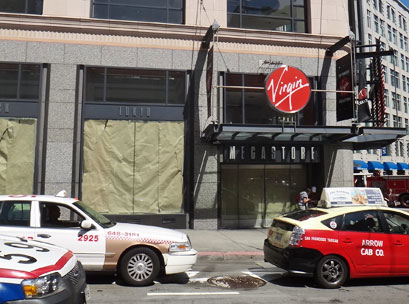Not so long ago, mobile phones were judged by how small they could be made, and stores by how big they could be built.
It was a time that belonged to brands like Nokia with its teeny-tiny mobile handsets and Virgin Megastore with its giant music selection. Then around 2007, the paradigm flipped. Apple launched the iPhone, and larger (and infinitely smarter) phones became instantly desirable. Just as suddenly, customers and retailers started questioning whether size is really everything in bricks-and-mortar stores.
And so the inverse relationship continues between screen size and store size. Now, mobile phones and tablets are meeting somewhere in the middle, with Samsung’s new Galaxy Note mobile boasting a 5.3-inch (13.46 cm) screen and Apple rumoured to be bumping up the screen of its new iPhone from 3.5 inches (8.89 cm) to 4 inches (10.16cm).
Meanwhile, in the most extreme cases, stores have shrunk to the size of billboards, with the QR-code enabled Tesco Homeplus in Korea, copied by the likes of Net-a-Porter’s Window Shop and Woolworths’ ‘virtual supermarket’.
The newest large-screen mobile phones succeed in breaking down the walls of any retail environment. From a customer’s perspective, it’s no longer impressive in its own right to have a massive range on display in a physical store. Mobile devices provide shoppers with access to an ‘endless aisle’ in the palm of their hands, one that has the added benefit of allowing on-the-go comparison-shopping. Digitisation of product too (as in the case of music and books) has accelerated the demise of big box concepts that were once (literally) huge, such as Borders.
What we’re seeing is a rapid reshaping of the retail landscape. As one example, The Wall Street Journal recently reported that US electronics retailer Best Buy is shifting away from the big box format that was once part of its DNA. It will shutter 50 large format stores this year, and test smaller shops in malls, plus a new ‘connected store’ concept, with features such as service hubs to assist shoppers, new checkout lanes and dedicated areas to make it easier to pick up purchases bought online.
Flagships won’t go the way of the dinosaur. But there will be fewer of them in a retailer’s portfolio, and those that remain will make bigger brand statements – far more experiential in nature, with an emphasis on service and interactivity as much as product.
Apple can take the credit (or the blame) for blazing the trail in reinventing retail, both digitally and physically. Their iPhone led the way in empowering shoppers, and its bricks and mortar stores redefined the physical experience – with at least 50 per cent of space in its “significant stores” dedicated to service, workshops and hands-on product displays.
Time to ask two questions: is your store network optimised for the new retail world, and are your ‘significant stores’ more than mere product showrooms?
Jon Bird heads up specialist retail marketing agency IdeaWorks. Email Jon. Blog: www.newretailblog.com Twitter: @thetweetailer






